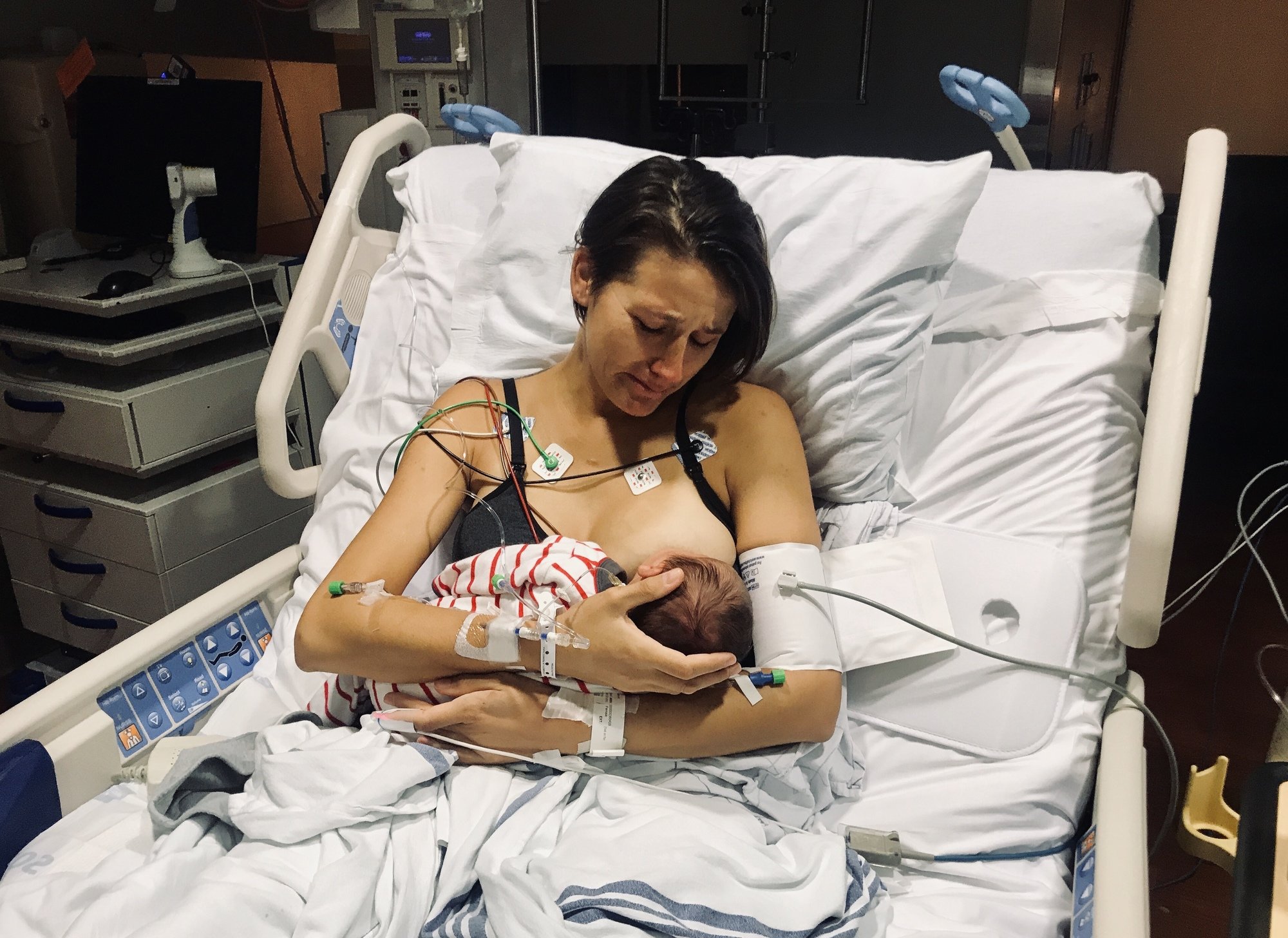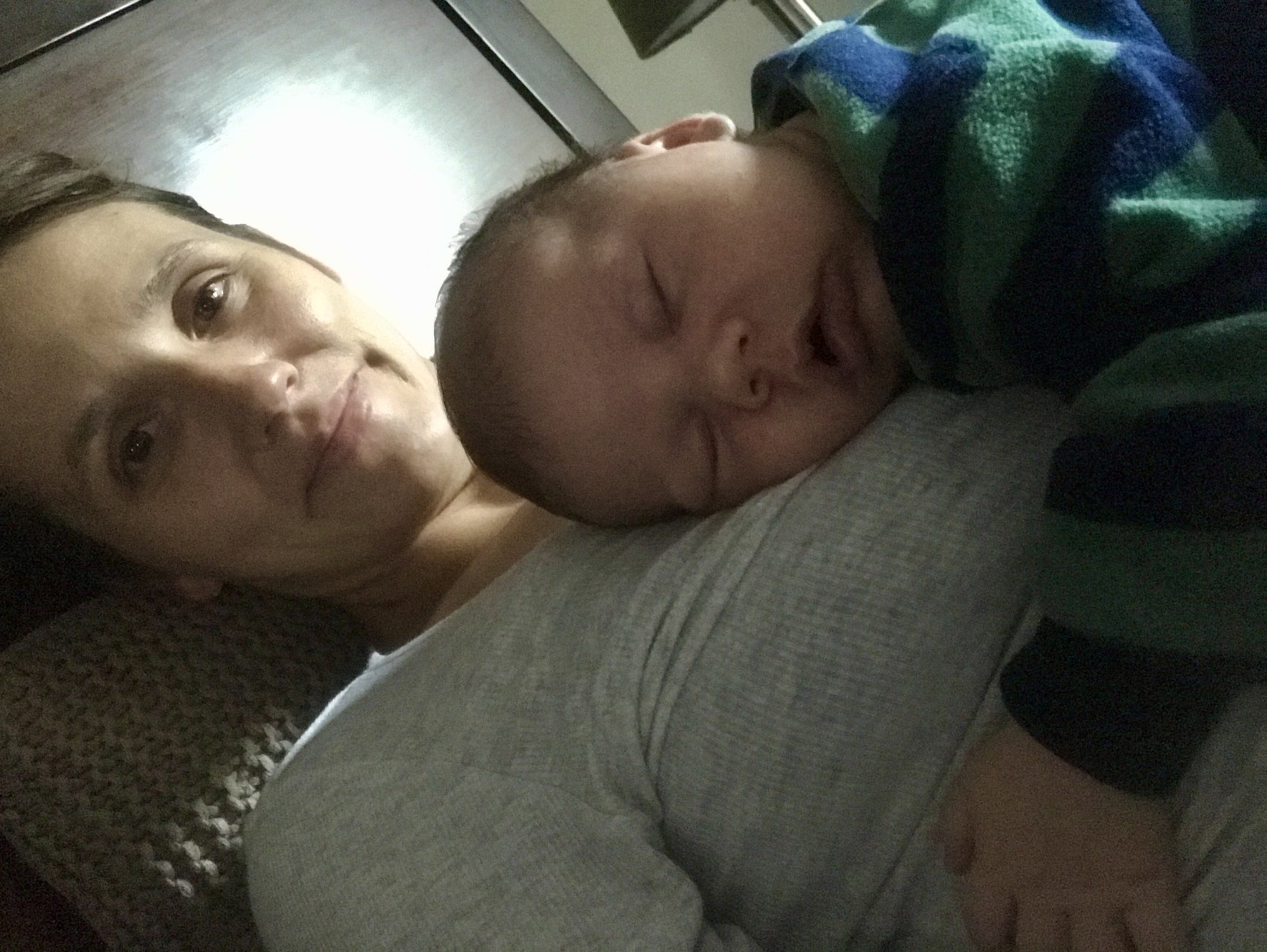
Thirty-one-year-old Victoria Devorak of Mount Holly, New Jersey, gave birth to her third son, Vaughn, in September, but only a month later, she found herself back in the hospital. The young mother of three had a stroke almost a month to the day after giving birth to her youngest child — the result of a blood clot that formed postpartum.
Devorak gave birth on September 26.

Speaking with CafeMom, Devorak shares that she and her husband Billy, 48, were already parents of three children at the time: Ava-Adora, 11, from Billy's first marriage, and their two sons, Greyson, 7, and Quintin, 4.
With her first child, Devorak had given birth vaginally, but her second son was different — he was delivered via an emergency C-section.
"I saw the same obstetrician for my second and third pregnancy," she says. "She said that I was a great candidate for a Vaginal Birth After Cesarean (VBAC). I was healthy, had a vaginal delivery before, and didn't have any pregnancy-related issues with any of my pregnancies."
Vaughn's birth happened very quickly, she says.
Her first two labors took considerably longer, "13 for my first, 30 hours for my second," she says.
"I pushed for three plus hours with each and my second ended in a C-section anyway," she continues. "With Vaughn my water broke at 4:12 a.m. and he was born at 5:41 a.m., and weighed 9 lbs 4 oz. [He was] larger than my first and second sons as well. We almost didn't make the 50-minute drive to the hospital."
After Vaughn's birth, nothing seemed out of the ordinary.

But early in the morning of October 29, things took a turn for the worse. Devorak woke up about 7 a.m. and was still in bed nursing Vaughn when her vision started to double.
"[I] yelled out to my husband that I needed him upstairs," she says. "All I remember saying was 'I can't see!'"
Devorak thought she was just tired from being up all night with her son, but when Billy reached for her hand she "became paralyzed on my right side," she remembers. "My body just slumped over."
Right away Billy called 911 "knowing it was most likely a stroke."
Devorak was rushed to Virtua Memorial Hospital in Mount Holly via ambulance, and once there "they gave me tissue plasminogen activator (TPA) to stop the stroke," she says. That's a blood-thinning medication, according to Very Well Health. "After the TPA I could ever so slightly wiggle my big toe."
Doctors told her that the severity of her stroke was "10/10" and that she had a clot that would need to be removed immediately. She was transferred to Penn Medicine in Philadelphia.
"There I had a thrombectomy to remove my clot," she explains. (According to Johns Hopkins Medicine, a thrombectomy is an operation to remove a clot from inside a vein or artery.)
"I had multiple MRIs, CT scans, and a transesophageal echocardiography (TEE)," she says.
A TEE is a test that uses high frequency waves to take photos of your heart, the American Heart Association website noted.
"I was told I have a patent foramen ovale," she continues. "It's a small flap connecting the upper chambers in my heart that didn't close at birth."
Devorak's condition is actually more common than she realized.

According to Mayo Clinic, about 25% of the population has patent foramen ovale, but Devorak explains most never know "because they don’t face any complications from it."
Devorak was at higher risk for complications because she was postpartum.
"Twelve weeks post-baby women are in a hypercoagulable period [times of increased risk for clotting, the Cleveland Clinic stated] and my blood was thicker than normal," she explains. "I most likely formed a clot while sitting up with my son."
The clot traveled back to her heart, passed through the hole in her heart, and then up to Devorak's brain, which caused the stroke.
"I myself am a nurse, and I know there is risk of clotting with pregnancy," she explains. "But as a very healthy person, who's had healthy, successful multiple pregnancies and births, it still came as a complete shock."
The evening before her stroke, Devorak says she could move her arm that eventually went limp but was having trouble with her leg.
The day after her stroke, however, her leg was fine "from the knee down."
Her doctors placed the mom on bed rest for 24 hours, and she was given a walker to help her move around.
"I went home four days later, walked out of the hospital, and did three weeks of outpatient physical therapy," she says.
Slowly Devorak recovered, but there were complications along the way.
"My vision has also been affected," she says. "I saw an ophthalmologist and wear glasses" and she has permanent vision loss in the upper right quadrant of both eyes.
"I feel lucky since if there's a part of my vision I'm OK with losing it would be the upper field," she says. "I do have double vision at times and a lot of eye strain much quicker than I've ever had."
If you ask her, Devorak says her vision loss is "nothing to complain about." Three months after her hospital stay, she was cleared to drive again.
Now the mom is seven months post-stroke and on the mend.

"Physically I feel good," she says. "Some days my right leg lags, feels heavy if I had to give a description, and I do have knee pain on and off. I have four young children, so it's hard to judge my mental/emotional state, but it does fluctuate."
Mostly, she feels lucky. Her husband acted very quickly and that "saved my life that day."
That is why she has one piece of advice to anyone even if they are unsure if it's a stroke: "Don't wait."
"My face didn't droop, but I lost my vision and became paralyzed on my right side," she explains.
Ultimately, Devorak says she's sharing her story to help raise awareness about "stroke in pregnant and postpartum women."
"[It's] something I would have never thought would happen to me," she adds.




